Sometimes, she says, she is out on Dublin bay in her Laser and wonders why she didn’t pick a team sport, asks herself why it has ended up like this?
There are no regrets, no second guessing her choices, no criticism of the sport she loves. Just passing thoughts on how things become the way they become?
How it is she ended up a solo sailor, alone for hours trimming fractions from her boat and from the wind and two stone from her body to coax her Laser to go faster?
Here in Dun Laoghaire they fondly call her Annalise, an Olympian who carries her status lightly. People know her name, know what she looks like. After Rio they hung a giant poster of her down the side of the National Yacht Club and each morning the commuters driving to into the city and the people walking the east pier, could share the pride.
Around here the Murphy is silent. She is simply Annalise like Sonia remains Sonia and Katie has always been Katie.
She says she is naturally gregarious and that doing it on her own, the hours on the water in Rio or Dublin Bay and recently in Lisbon, can get lonely.
Talking up her success and position in sailing is anathema to her and if she does, it is guarded and almost begrudging. She is tough on herself. She has anxiety about her ability, questions whether she can do the things people expect of her, will it all be a success or a big flat belly flop? And all this after Rio.
“I’m still the same person,” she says. “I don’t think the Olympic Games changed me that much. I still have the exact same fears that I had before.
“I’ve got a little bit more confidence in my sailing ability, but not that much more. I still have fears that that I’m not going to be good enough.
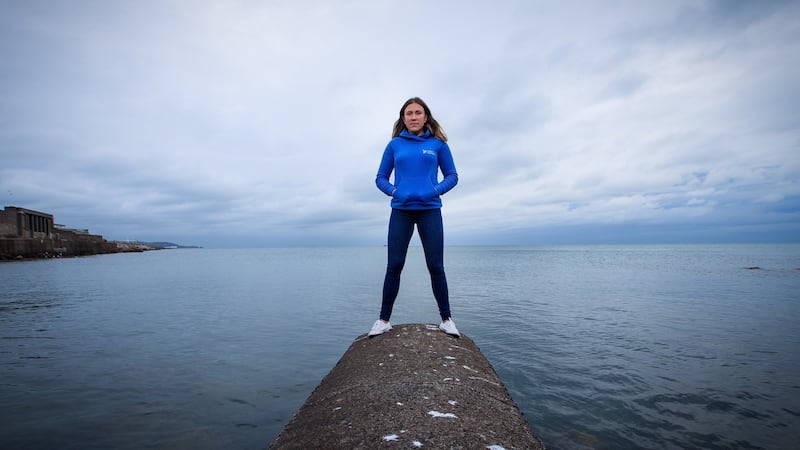
“I don’t necessarily think it’s a bad thing. That’s maybe why I’ve done well, the motivation that I’m afraid I’m not good enough. That motivates me to try harder and train harder and try to think of ways I can get better the entire time.”
Majestic
It’s an eternally searching position from a sailor who dramatically fell off the podium in London 2012, then turned a crisis of confidence into a silver medal.
When she knew everyone was watching to see if she would fall, she rose. Rio and Irish Olympic history now define her.
Still, the confidence wanes and grows with each achievement, the doubt an incitement to drive and build. Her internal disposition is a steady stream of self provocation. It never allows her stay still.
Today though, she has her eyes on the world and all of its water in the Volvo Ocean Race. The name alone is majestic in its breadth and sweep. From her solo success, Annalise has ‘crewed up’.
For almost a year, the boat will own her. As one of 10 she has now declared herself a team player.
“I get lonely all the time,” she explains. “I don’t really like being by myself. Generally I like to be around people, hang out with people. Chat away.
“I’d be way more suited to being in a team sport than a singled handed sport because . . . I mean . . . I probably talk shite most of the time.”
She has more plunged than dipped her toe into the high end of muscle boats, the Ocean going Volvo 65 designed specifically for the race.
No paint on the inside, just a black carbon canvas. Spare. “It’s dark downside,” she says. A coat of paint to brighten it would be another layer of weight. Too much.
All seven teams in the 45,000 nautical mile journey have exactly the same boat, one design and an allowance of two sets of sails for the entire race, a restriction to stop money talking too loudly.
The bunk beds are sweet, she says. They are rigged to a pulley system so if it’s rough the crew can haul themselves the whole way up and wedge against the carbon fibre wall, snug like a burrito on a grill.
It means in their four hours on, four hours off around the clock roster they don’t flip into the water sloshing around inside the sleeping quarters.
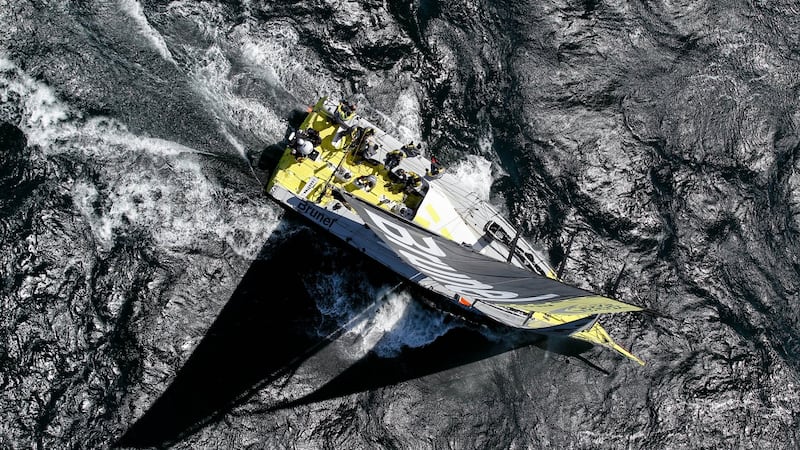
Mental attitude
Prior to her recent stints of training she had never slept overnight on a boat. Whether it was racing her Olympic Laser, or against men in the foiling Moths, she has been successfully sailing, but until now it had always been a few hours on the bay then back to shore.
“I’ve only ever slept on this boat. I’d 48 hours, the longest I’ve been on it,” she says, coolly pocketing that challenge.
“Being thrown into this team is refreshing. It’s a whole group of people doing the same thing and all wanting the same outcome.
“It’s cool. It’s different. It’s terrifying, the whole race. It’s so hard. I think it’s going to make me feel that Olympic sailing was the easiest thing in the world. Not in terms of the technical preparation but in terms of the mental attitude.
“Even when you are having bad days . . . getting through the day . . . not bringing down the rest of the crew. That’s different. But it’s going to be amazing. I’m pretty lucky to have got to do it. I’m getting to see the world in a 65 foot boat.”
The first leg from Lisbon in Portugal to Alacante in Spain is a sprint, 700 nautical miles, the same as around Ireland and only few days ride. Leg three, Cape Town to Melbourne is 6,500 miles and leg seven, Auckland to Itaja in Brazil may define their race.
It’s the longest leg and cruel, 7,600 nautical miles and almost all of it through some of the coldest, roughest ocean in the world.
The fleet leaves Auckland on March 18th and heads south past New Zealand’s East Cape and into the Southern Ocean.
Once far enough south they will turn and race from west to east, catching the low pressure systems circulating around Antarctica. There will be big seas. There will be big winds. And there will be icebergs.
Once across that vast expanse of wilderness the boats take on the legendary Cape Horn and turn north, following the coast of Argentina, Uruguay and finally Brazil and Itajaí.
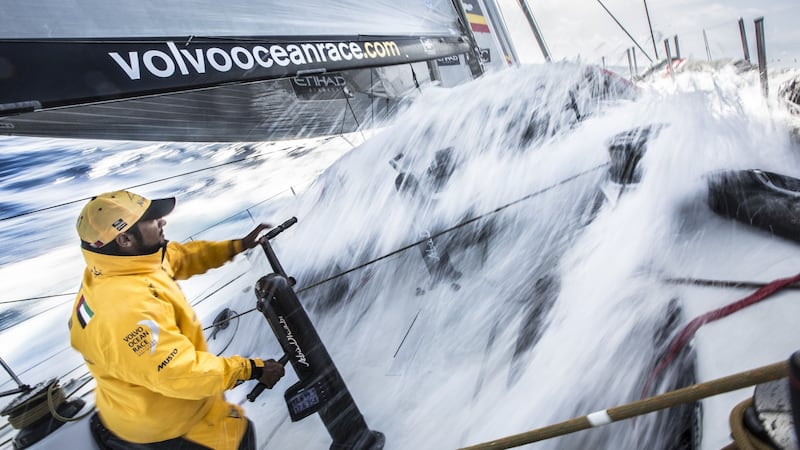
Desolation
Treacy Edwards, the British sailor who skippered ‘Maiden’, called those waters of the Southern Ocean the ‘edge of your imagination, utter desolation.”
“Excited. Terrified,” says Annalise of the challenge ahead. “Worried about the dangers involved in the race . . . I’m looking forward to what our team can do . . . we are young and enthusiastic.
“When I started going on about all the dangers at home, like if this happens you’re going to die, if this happens you’re going to die, if that happens you are going to die - my sister (Claudine) was like ‘I don’t want to know, I don’t want to know.’
“I guess my family are excited for me. They are definitely worried. But they’ve done mad things as well in their life.
“My parents held the round Ireland record for 22 years. They did that when they had three kids under six. They abandoned us with our granny and headed off around Ireland.”
For all of her wise cracking and underplay she is the most successful female sailor Ireland has ever had. Those who watch carefully know that her natural cheer is authentic and the gallows humour her way of deflecting from a talent and success that keeps moving forward.
Ocean racers are not Olympic racers. Like frontiersmen, mountaineers or free divers they bear the miles of endurance like battle scars. The moulded unadorned fibreglass interiors are not so much a disdain for comfort as preparedness for sacrifice.
She throws a pitying smile when hardship is mentioned. It’s as though comfort is the most virulent kind of serial killer. She is empathetic, benevolent and kindly to a land lubber. But unflinching.
“I think people have dealt with worse than not showering for three weeks. I don’t think it’s going to be a deal breaker,” she says calmly. “I guess we’ll all be smelly together.
“I feel it’s going to be the best thing I can do. This is the first time I have thought I could actually do professional sailing. It’s hard when you are just an Olympic sailor. You are so well skilled but if you want to get onto a big boat, to be a tactician . . . this gives me opportunity.
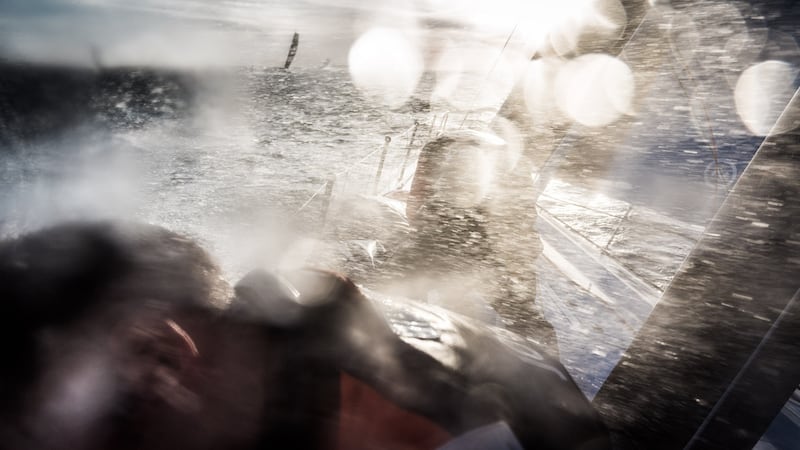
“I mean Olympic sailing is so hard and I’m hard on myself.
“I found it very difficult between London and Rio because I started to sail badly in 2014 and then my whole idea of an Olympic medal began to disappear. I thought maybe it’s not going to happen for me, that I’m going to work so hard over the next years and I’m just not good enough.
“I couldn’t even see the light at the end of the tunnel. All I could see was three more years. Do I have to do three more years of this? Feeling that I’m not good enough. That I’m never going to get to where I want to get to. This gives me a perfect 10 month break even though I’ll be sailing 24 hours a day.
“Then I can throw myself back into Laser sailing. Go out for an hour. Come back in. Then go sleep in a nice bed.”
Washed away
The boat ‘Turn The Tide On Plastic’ has an overt environmental theme as well as gender equality. There is an even split of five men and five women. Most of the crew are under 30.
Veteran Irish sailor Damian Foxall is also in the race and part of the Vestas team. He has competed in five Volvo Ocean Races and won it as part of Groupama in 2011-12.
He also set a round-the-world speed record onboard G-Class catamaran Cheyenne. Kerry of course, he is a Derrynane boy gripped with ocean fever.
Foxall has fallen overboard in the race only to be picked up by a boat that was coincidentally taking the same course. In five-metre waves 1,200 miles from land, Dutch friend Hans Horrevoets was fatally washed away from ABN AMRO.
Death is there and all the sailors know it. But it is not what the race is about. It is an eye opening, life changing voyage.
“Oh,” Murphy adds. “I’m the medic too.” She raises her arm in the air to show the veins running from her wrist along the inside of her forearm and describes her efforts to insert a canella. The simple medical procedure becames a splatter movie with blood fizzing into the air like a shaken bottle of cola.
“I’m on lots of different things. I’m going to be steering. I’m going to main trim. I’ve done medical training so I can stitch, I can staple, inject. So I’ve been looking for victim to do all this training on. I’m also in charge of food, the freeze dried. I have to ensure everyone gets the right amount of calories every day.”
She recites the drill as if by rote.
“We have a camping gas stove. We have a kettle. Pour it into the freeze dried. Mix the freeze dried. Leave it to rehydrate. Eat it. Make sure you leave it for 15 minutes. Otherwise it will make you sick.
“It will be hard for me mentally every day to get through each day,” she adds more earnestly. “When you are on each leg you have to think that it is never going to end. You can’t be counting down the days. It’s an endurance test. You have to think like that. That’s mentally very hard.
“But you are going to see the best sun sets and sun rises of anyone.”
Asked for five words that define what she is doing, how she feels about casting off and she gives back 59. Ideas and emotions swim in her head, almost in overload, banging off each other.
“I hope I don’t get my eyebrows shaved off or something like that at the equator,” she says. “I probably am going to. I don’t know how I’ll look without eyebrows.”
And off she goes rubbing her lower forehead for the imaginary lost eyebrows. Off she goes, infectious, self deprecating, talented, doubting, conquering. Off she goes to discover a new world.
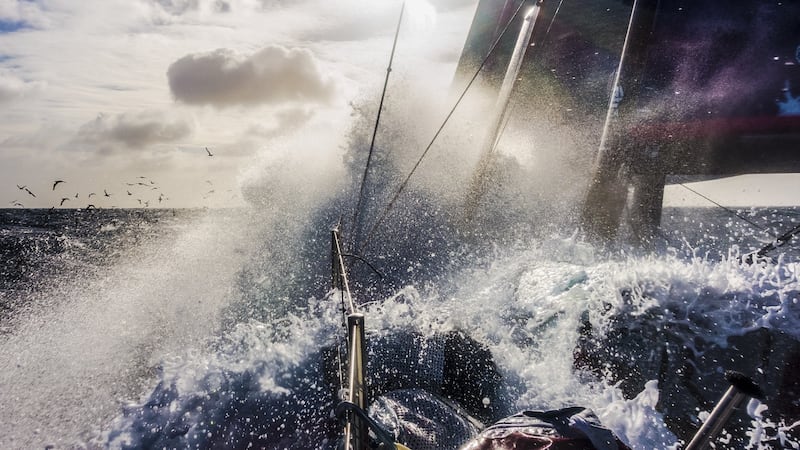
The Volvo Ocean Race – All you need to know
The total distance for the 2017-18 edition will be 45,000 nautical miles and is the longest route in the history of the race that was formerly known as the Whitbread Round the World Race. It typically sailed a distance of about 32,000 nautical miles.
A total of 12,500 nautical miles will be raced in the Southern Ocean, a hostile, freezing environment renowned for boat-breaking storms and gruelling conditions. Most stages of the race range in length from 700 to 6,500 nautical miles. Port stopovers are usually less than two weeks in duration but there are also several ‘pit-stops’ of just a few days at key locations.
There will be a total of eight months of racing starting on October 22nd in Alicante and finishing on June 30th, 2018 in The Hague. Eleven legs make up the global race track visiting 12 "landmark" host cities. Each leg is scored separately
The fleet comprises seven teams while an eighth - for which a brand-new boat is available - did not materialise.
Out of 77 sailors, there are a total of 18 female sailors, the biggest proportion ever following a concerted effort by the organisers to ensure teams would be mixed. As an incentive, teams opting for an all-male line-up must race with fewer crew; none have taken this option. Teams are also required to have under 30’s included in their crew panel.
There are 28 sailors participating for the first time and 14 sailors across the seven teams that have won the race before. There will be 18 nations represented in the total crew line-up.
Annalise Murphy is one of several Rio 2012 Olympic medallists selected to compete in this race. Her inclusion required a crash course in offshore sailing including Sea Survival training, Yachtmaster theory courses as well as medical training as she is also the designated medic on board “Turn the Tide on Plastic”. She has not previously competed in an offshore/trans-oceanic race.
Ireland has been represented in the race on winning teams on three separate occasions. Cork sailor Justin Slattery won the race in 2005-2006 on board ABN AMRO 1 with skipper Mike Sanderson. He also won the last edition of the race with Ian Walker on Abu Dhabi Ocean Racing. Kerryman Damian Foxall won the race in 2011-12 with French skipper Franck Cammas on Groupama, lifting the trophy on home turf as that edition of the race finished in Galway.
Murphy is only the third Irish woman to compete in this round the world race. Previously, Susan Kavanagh raced on Norsk Data in the 1985-86 Whitbread. Angela Farrell raced in the first all-woman team with Tracy Edwards on Maiden in the 1989-90 race.
Ireland has had two previous flagged entries in the race. NCB Ireland was the Irish designed and built 82-foot maxi skippered by the late Joe English that competed in the 1989-90 Whitbread race. Green Dragon skippered by Ian Walker competed in the 2008-09 Volvo Ocean Race. Both projects were conceived by Galway’s Enda O’Coineen who mounted his own Vendee Globe solo ocean race entry last year that ended prematurely with a dismasting close to New Zealand’s South Island.











